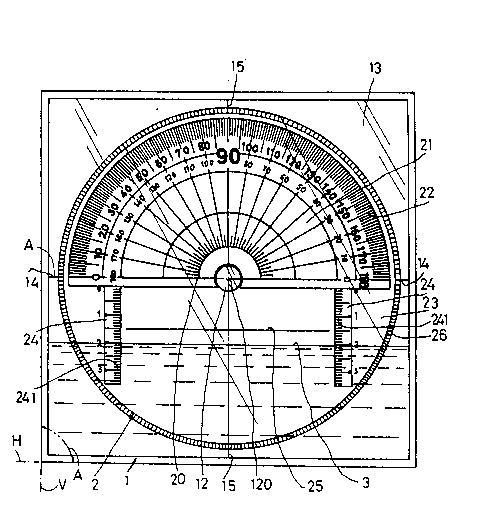Some of the information on this Web page has been provided by external sources. The Government of Canada is not responsible for the accuracy, reliability or currency of the information supplied by external sources. Users wishing to rely upon this information should consult directly with the source of the information. Content provided by external sources is not subject to official languages, privacy and accessibility requirements.
Any discrepancies in the text and image of the Claims and Abstract are due to differing posting times. Text of the Claims and Abstract are posted:
| (12) Patent: | (11) CA 2052262 |
|---|---|
| (54) English Title: | SIMPLY-CONSTRUCTED INSTRUMENT FOR MEASURING HORIZONTAL LINE, VERTICAL LINE AND ANGLES |
| (54) French Title: | INSTRUMENT DE CONCEPTION SIMPLE POUR MESURER LA LIGNE HORIZONTALE, LA LIGNE VERTICALE ET LES ANGLES |
| Status: | Expired and beyond the Period of Reversal |
| (51) International Patent Classification (IPC): |
|
|---|---|
| (72) Inventors : |
|
| (73) Owners : |
|
| (71) Applicants : |
|
| (74) Agent: | SMART & BIGGAR LP |
| (74) Associate agent: | |
| (45) Issued: | 1996-10-29 |
| (22) Filed Date: | 1991-09-25 |
| (41) Open to Public Inspection: | 1992-04-02 |
| Examination requested: | 1995-09-21 |
| Availability of licence: | N/A |
| Dedicated to the Public: | N/A |
| (25) Language of filing: | English |
| Patent Cooperation Treaty (PCT): | No |
|---|
| (30) Application Priority Data: | ||||||
|---|---|---|---|---|---|---|
|
An instrument for measuring angles, vertical line
or horizontal line includes a square casing having two
axial lines crossing at a center of the casing and
having a colored liquid filled in the casing, and a
rotating disc rotatably mounted on the casing, in which
the rotating disc is formed with an upper half circle
portion radially formed with a plurality of angular
graduations in terms of degrees, and formed with a
lower half circle portion having two vertical columns
parallelly formed below a diametrical line dividing the
two half circle portions, and at least a reference line
linked between any two horizontal graduations
respectively formed in the two vertical columns,
whereby upon a rotation of the disc to parallel the
reference line to a liquid level of the coloured
liquid, an angle can be obtained by matching the
angular graduation with any one axial line when the
casing is laid on or coincided with a plane to be
measured.
Note: Claims are shown in the official language in which they were submitted.
Note: Descriptions are shown in the official language in which they were submitted.

2024-08-01:As part of the Next Generation Patents (NGP) transition, the Canadian Patents Database (CPD) now contains a more detailed Event History, which replicates the Event Log of our new back-office solution.
Please note that "Inactive:" events refers to events no longer in use in our new back-office solution.
For a clearer understanding of the status of the application/patent presented on this page, the site Disclaimer , as well as the definitions for Patent , Event History , Maintenance Fee and Payment History should be consulted.
| Description | Date |
|---|---|
| Inactive: IPC from MCD | 2006-03-11 |
| Time Limit for Reversal Expired | 2000-09-25 |
| Letter Sent | 1999-09-27 |
| Grant by Issuance | 1996-10-29 |
| Request for Examination Requirements Determined Compliant | 1995-09-21 |
| All Requirements for Examination Determined Compliant | 1995-09-21 |
| Application Published (Open to Public Inspection) | 1992-04-02 |
There is no abandonment history.
| Fee Type | Anniversary Year | Due Date | Paid Date |
|---|---|---|---|
| MF (patent, 6th anniv.) - small | 1997-09-25 | 1997-09-04 | |
| MF (patent, 7th anniv.) - small | 1998-09-25 | 1998-07-28 |
Note: Records showing the ownership history in alphabetical order.
| Current Owners on Record |
|---|
| MING-CHUNG HUANG |
| Past Owners on Record |
|---|
| None |